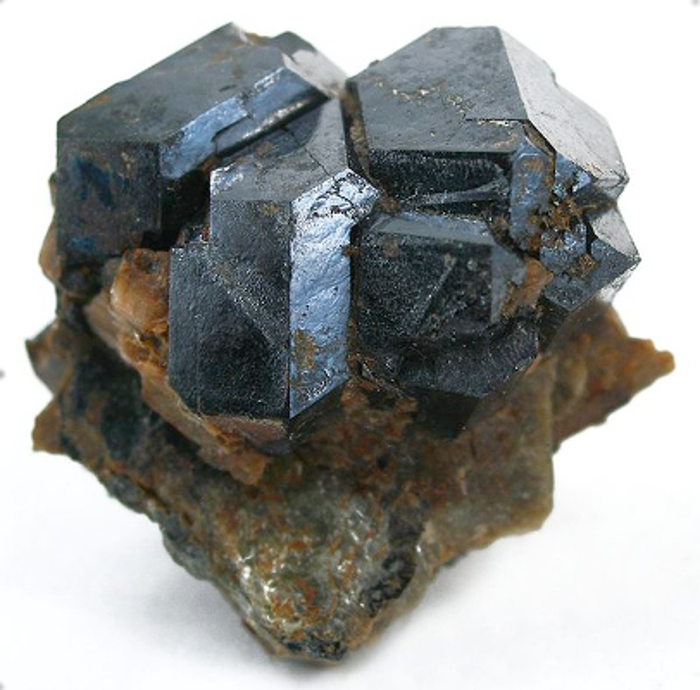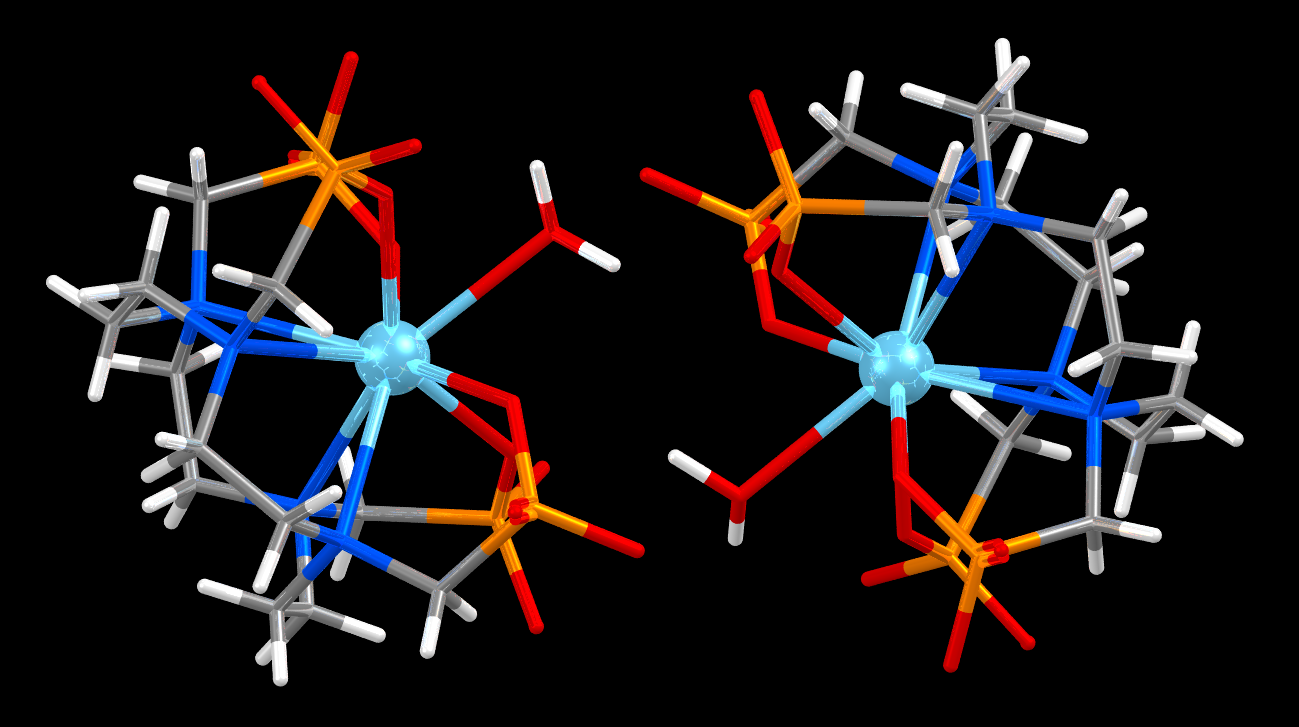Actinium
Actinium:

Crystals of Uraninite – a source of Actinium (Photo Credit: Robert M. Lavinsky; Source: WikiCommons)
Facts about Actinium:
- Actinium: Actinium is a radioactive metal, silver in color.
- Fun fact about Actinium: Actinium glows with a beautiful blue color in the dark, due to its intensely strong radioactivity!
- Chemical symbol: Ac
- Atomic number: 89
A crystal structure celebrating Actinium:

An organometallic complex of Lanthanum(III), the La atoms marked in sky blue. Actinium(III) is also reported to form the same compound. Counterions and solvent molecules are not shown for clarity.
Facts about this structure:
- Formula: C12 H26 La N4 O13 P4 5-,5(H4 N +),10.25(H2 O)
- Structure name: pentakis(ammonium) [(1,4,7,10-tetraazacyclododecane-1,4,7,10-tetrayl)tetrakis(methylene)]tetrakis[phosphonato]-aqua-lanthanum(iii) hydrate
- Fun fact about the structure: The Lanthanum structure, reported in 2019, also has potential applications for in vivo delivery of Actinium(III) in living systems for disease treatment.
- CSD refcode: DUBGAL (What’s this?)
- Associated publication: Benjamin W. Stein, Amanda Morgenstern, Enrique R. Batista, Eva R. Birnbaum, Sharon E. Bone, Samantha K. Cary, Maryline G. Ferrier, Kevin D. John, Juan Lezama Pacheco, Stosh A. Kozimor, Veronika Mocko, Brian L. Scott, Ping Yang, Journal of the American Chemical Society, 2019, 141, 19404, DOI: 10.1021/jacs.9b10354
More about Actinium:
Actinium like most of the other Lanthanoid elements, is extremely rare in natural occurrence. It is produced mostly through nuclear reactions in the laboratory. Actinium forms a handful of compounds in the +III oxidation state. A major area of research involving Actinium involves using its high radioactivity in disease treatment. It is also used as a source of neutrons, and in modelling ocean water mixing.
Learn More About the International Year of the Periodic Table (IYPT) in Crystals Project:
This project (#IYPTCrystals) is part of the International Year of the Periodic Table celebration (#IYPT2019), read more about the project here.
You can follow us on social media; search for #IYPTCrystals or follow The CCDC on X @ccdc_cambridge on Facebook ccdc.cambridge, on Instagram ccdc_cambridge or on YouTube CCDCCambridge.
Understand some of the terms and concepts used with our Frequently Asked Questions page here.
A 3D visualization showing Actinium in real crystal structures: